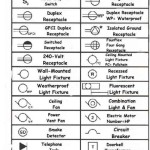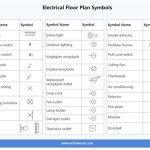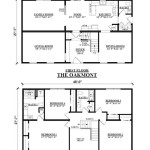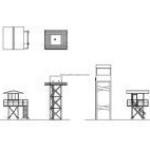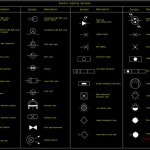New Modern Farmhouse Plans: Blending Tradition and Contemporary Design
The modern farmhouse architectural style continues to gain traction, resonating with homeowners seeking a balance of rustic charm and contemporary functionality. This enduring appeal stems from its capacity to evoke a sense of warmth and connection to the land, while incorporating modern amenities and design principles. New modern farmhouse plans reflect an evolution of the concept, incorporating energy efficiency, flexible living spaces, and updated aesthetics. Understanding the key elements and characteristics of these plans is essential for anyone considering building or renovating a home in this popular style.
Modern farmhouse design is not simply about replicating a traditional farmhouse. It involves a carefully curated blend of elements. Original farmhouses were often built out of necessity, emphasizing functionality and durability with readily available materials. Modern interpretations retain this focus on practicality but incorporate updated materials, layouts, and technologies. The fundamental principle is to create a comfortable, inviting space that reflects a relaxed, yet sophisticated lifestyle.
The exterior of a modern farmhouse typically features clean lines, a neutral color palette, and a prominent gable roof. White, gray, and light beige are common choices for siding, often paired with black window frames and accents. Natural materials like wood, stone, and brick are incorporated to add texture and visual interest. Large windows are crucial, allowing ample natural light to flood the interior. Porches, both front and back, are integral to the design, providing outdoor living spaces and enhancing the connection to the surrounding landscape.
Inside, modern farmhouse plans emphasize open-concept layouts, maximizing space and facilitating social interaction. Kitchens are often the heart of the home, featuring large islands, farmhouse sinks, and a combination of classic and contemporary cabinetry. Hardwood floors, shiplap walls, and exposed beams contribute to the rustic aesthetic, while modern lighting fixtures and sleek hardware provide a contemporary touch. Attention to detail is paramount, with careful consideration given to the selection of materials and finishes.
Key Point 1: Essential Exterior Features of New Modern Farmhouse Plans
The exterior of a modern farmhouse is crucial in establishing the overall aesthetic and setting the tone for the interior. Several key features define this style, combining traditional elements with contemporary updates.
Gable Roofs and Simple Silhouettes: A prominent gable roof is a defining characteristic of the farmhouse style. New plans often feature multiple gables, creating visual interest and depth. The overall silhouette is typically simple and rectangular, reflecting the functional nature of traditional farmhouses. Roof materials can range from traditional asphalt shingles to more modern metal roofing, providing a balance of cost-effectiveness and durability.
Neutral Color Palettes and Contrasting Accents: As mentioned previously, neutral colors are a cornerstone of the modern farmhouse exterior. White is a popular choice for siding, providing a clean and timeless look. Gray and beige offer softer alternatives, while darker shades like charcoal gray or navy blue can be used for accents. Black window frames and door hardware create a striking contrast against the lighter siding, adding a touch of modern sophistication. These contrasting elements draw the eye and enhance the visual appeal of the structure.
Emphasizing Natural Materials: Incorporating natural materials is vital to achieving the rustic charm of a modern farmhouse. Wood siding, stone veneer, and brick accents add texture and visual warmth. Reclaimed wood can be used for porch supports or decorative elements, further enhancing the rustic feel. The strategic use of these materials creates a connection to the natural environment and brings a sense of authenticity to the design. The front door is often constructed from solid wood, stained or painted to complement the overall color scheme.
Porches and Outdoor Living Spaces: Porches are integral to the farmhouse aesthetic, providing spaces for relaxation and social interaction. Front porches are typically prominent, offering a welcoming space for visitors. Back porches or patios extend the living space outdoors, creating areas for dining, entertaining, or simply enjoying the surrounding landscape. These outdoor spaces are often furnished with comfortable seating, outdoor lighting, and landscaping to create inviting and functional areas.
Large Windows and Natural Light: Large windows are essential for bringing natural light into the interior and connecting the home with the outdoors. Windows are often arranged in symmetrical patterns, enhancing the visual balance of the facade. Grids or mullions can be incorporated into the window design to add a traditional touch. Casement windows, double-hung windows, and picture windows are all common choices, depending on the desired aesthetic and functionality.
Key Point 2: Interior Design Elements of Contemporary Farmhouse Plans
The interior of a modern farmhouse is characterized by open spaces, comfortable furnishings, and a blend of rustic and contemporary elements. New plans prioritize functionality and flow, creating spaces that are both aesthetically pleasing and practical for modern living.
Open-Concept Living Spaces: Open-concept layouts are a hallmark of modern farmhouse design. Kitchens, dining areas, and living rooms often flow seamlessly together, creating a spacious and inviting area for family gatherings and social events. This open layout promotes interaction and allows for flexible use of space. The kitchen island often serves as a focal point, providing additional workspace and seating.
Farmhouse Sinks and Kitchen Islands: The farmhouse sink is a signature element of the modern farmhouse kitchen. Its large size and deep basin are both functional and aesthetically pleasing. Kitchen islands are also essential, providing ample counter space for food preparation and serving as a gathering spot for family and friends. Islands are often constructed from wood or feature a butcher block top, adding to the rustic charm of the space. Pendant lighting above the island adds both illumination and visual interest.
Hardwood Floors and Shiplap Walls: Hardwood floors are a classic choice for modern farmhouses, providing warmth and durability. Wide planks are particularly popular, adding to the rustic aesthetic. Shiplap walls are another defining feature, creating a textured and visually appealing backdrop. Shiplap can be used throughout the house or in specific areas, such as the kitchen, bathroom, or living room. Painted white or a light neutral color, it provides a clean and bright look.
Exposed Beams and Natural Wood Accents: Exposed beams add structural and visual interest to the interior. They can be original to the house or added as a decorative element. Natural wood accents, such as shelving, trim, and furniture, also contribute to the rustic charm of the space. Using reclaimed wood for these elements enhances the authenticity of the design. The warmth of the wood contrasts beautifully with the lighter colors used throughout the interior.
Modern Lighting Fixtures and Hardware: While the overall aesthetic is rooted in tradition, modern lighting fixtures and hardware provide a contemporary touch. Pendant lights, chandeliers, and sconces with clean lines and metallic finishes are common choices. Black or brushed nickel hardware adds a touch of sophistication to cabinets and doors. The careful selection of these elements ensures that the interior feels both comfortable and stylish.
Key Point 3: Energy Efficiency and Sustainability in Modern Farmhouse Plans
Modern farmhouse plans often incorporate energy-efficient features and sustainable materials, reflecting a growing awareness of environmental concerns. These elements not only reduce energy consumption and lower utility bills but also enhance the overall comfort and health of the home.
Energy-Efficient Windows and Insulation: High-performance windows and insulation are crucial for minimizing energy loss and maintaining a comfortable indoor temperature. Double-pane or triple-pane windows with low-E coatings reduce heat transfer, while proper insulation in the walls, roof, and floors helps to prevent drafts and regulate temperature. These features significantly reduce the need for heating and cooling, resulting in lower energy bills.
Sustainable Building Materials: Utilizing sustainable building materials is another key aspect of modern farmhouse design. Reclaimed wood, bamboo flooring, and recycled content materials reduce environmental impact and add character to the home. Choosing locally sourced materials also supports the local economy and reduces transportation costs. Eco-friendly paints and finishes further minimize the environmental footprint of the build.
Solar Panels and Renewable Energy Sources: Incorporating solar panels or other renewable energy sources can significantly reduce reliance on fossil fuels. Solar panels can be installed on the roof or in the surrounding landscape, generating electricity to power the home. Other renewable energy options, such as geothermal heating and cooling, can also be considered. These sustainable energy solutions not only benefit the environment but also provide long-term cost savings.
Water Conservation Measures: Implementing water conservation measures is essential for sustainable living. Low-flow toilets, showerheads, and faucets reduce water consumption without sacrificing performance. Rainwater harvesting systems can be used to collect rainwater for irrigation and other non-potable uses. Drought-tolerant landscaping further reduces the need for watering, conserving precious water resources.
Smart Home Technology: Integrating smart home technology can further enhance energy efficiency and sustainability. Smart thermostats automatically adjust the temperature based on occupancy and weather conditions, minimizing energy waste. Smart lighting systems allow for automated control of lighting, ensuring that lights are only on when needed. These technologies can be controlled remotely, providing homeowners with greater control over their energy consumption.
The modern farmhouse style continues to evolve, reflecting changing lifestyles and priorities. New modern farmhouse plans offer a compelling combination of rustic charm, contemporary functionality, and energy efficiency. By understanding the key elements and design principles of this style, homeowners can create a home that is both beautiful and sustainable, providing a comfortable and inviting space for years to come. The enduring appeal of the modern farmhouse lies in its ability to connect with nature, foster a sense of community, and create a haven for modern living.

Pendleton House Plan Most Popular Modern Farmhouse Home Design Main Floor Primary Mf 2639

Trend Alert Small Farmhouse Plans Blog Floorplans Com

Modern Farmhouse Plans We Love Blog Eplans Com

Open Floor Plan Modern Farmhouse Designs Of 2024 Houseplans Blog Com

Small Modern Farmhouse Plans Houseplans Blog Com

New Modern Farmhouse Plan 4 Beds 3 Baths Drummond House Plans

Modern Farmhouse Plans Floor House The Designers

5 Exciting Farmhouse Plans For 2024 Frank Betz Blog

Plan 14689rk Modern Farmhouse With Formal Dining Room And Informal Lounge Style House Plans New

Modern Farmhouse Plans Traditional Designs

